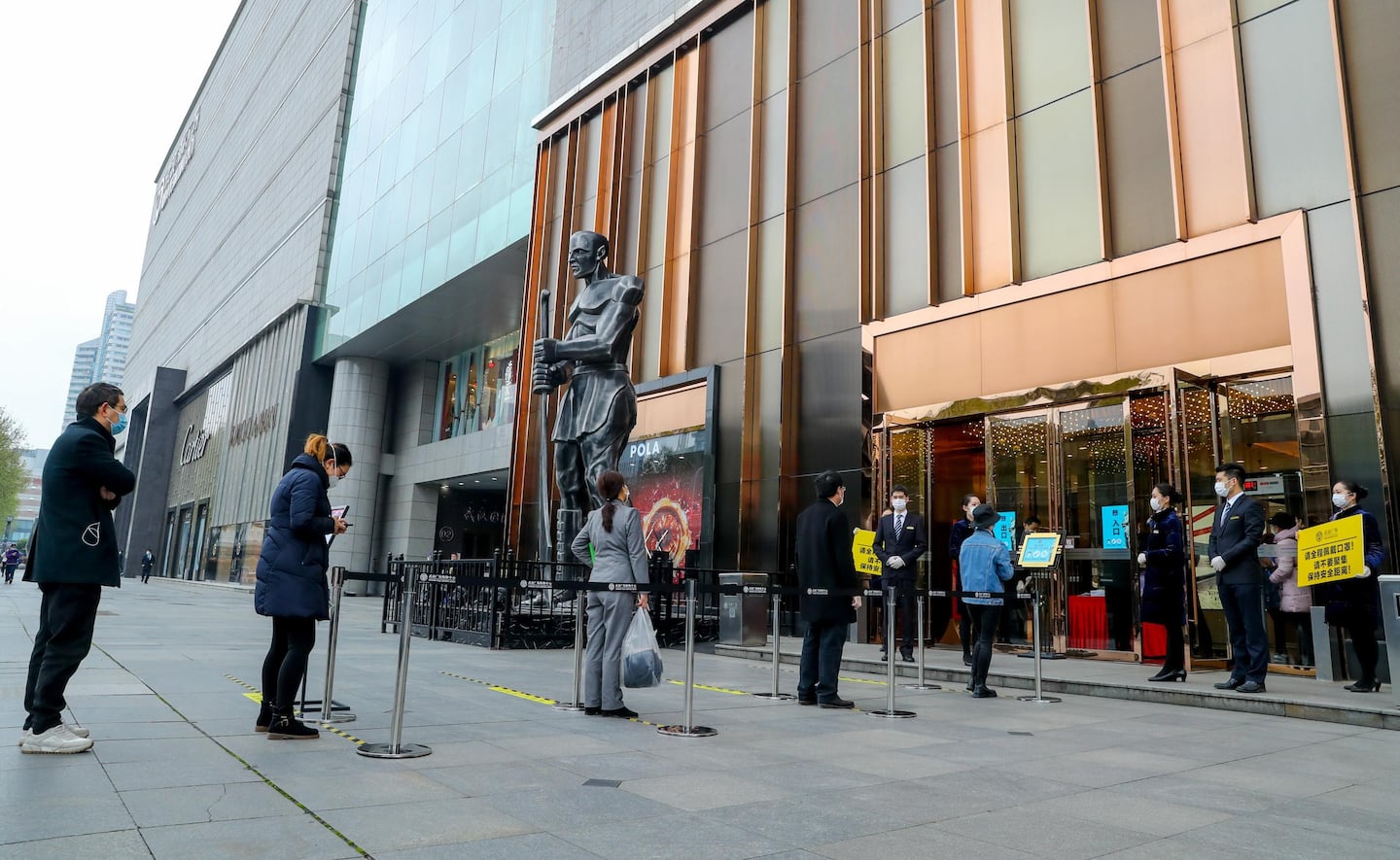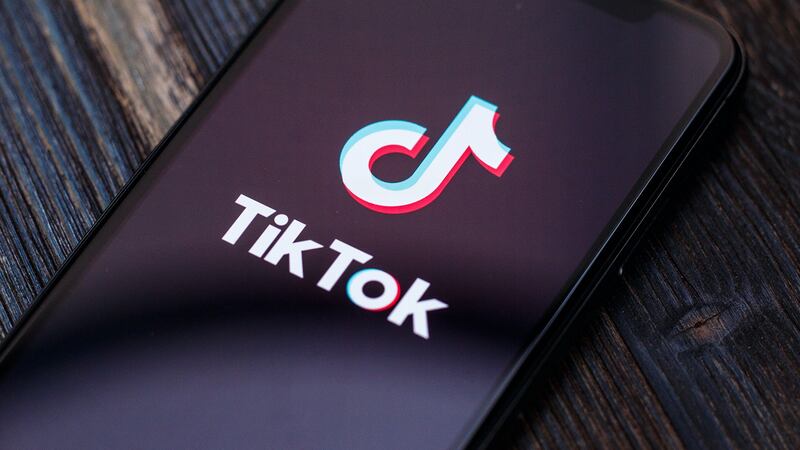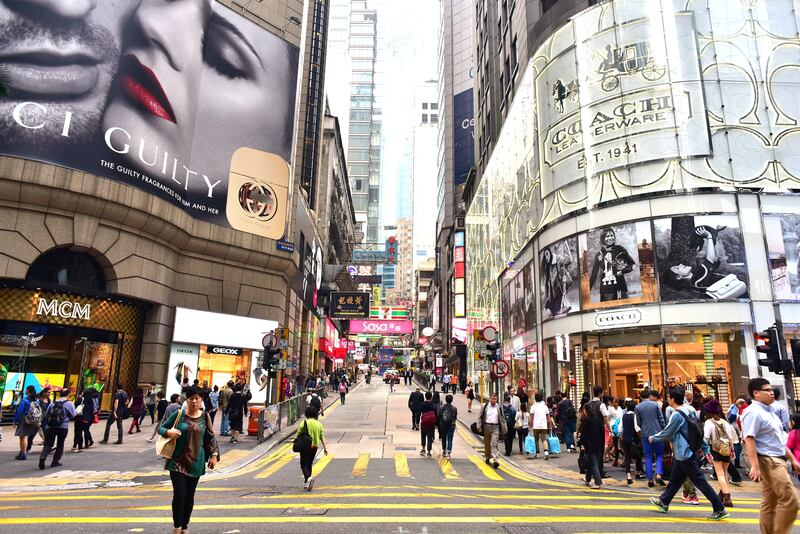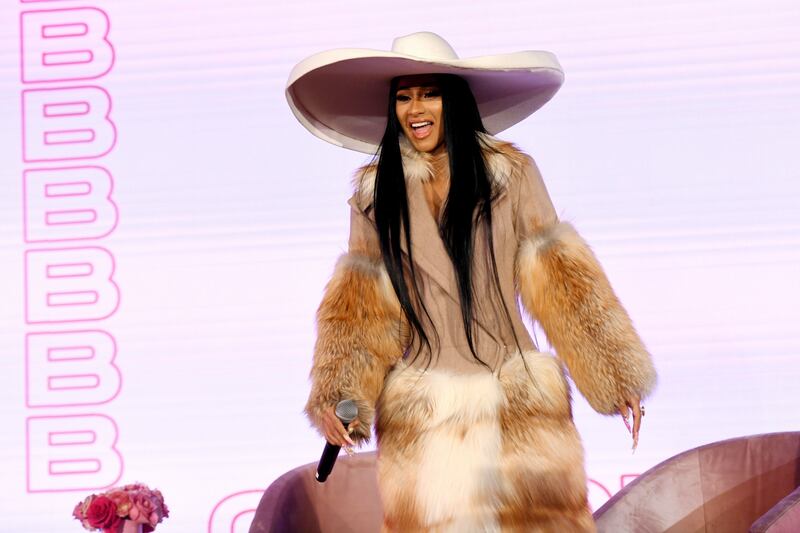
The Business of Fashion
Agenda-setting intelligence, analysis and advice for the global fashion community.

Agenda-setting intelligence, analysis and advice for the global fashion community.


SHANGHAI, China – As spring returns to Shanghai, the city is casting off its long, lonely winter hibernation, which has been exacerbated by prolonged shutdowns and collective anxiety as people watched the coronavirus pandemic decimate communities, first in China, and now around the world.
Finally, life on the street has largely returned to normal – malls, parks, restaurants, gyms and spas are open for business and peak hour traffic once again jams the streets. This is a new normal, but it's one where entry into a mall requires a temperature gun pointed at the forehead to detect signs of a fever, handshakes are out of favour and mask-wearing remains ubiquitous in public.
At IAPM mall, in the shopping district of Huaihai Road, a glance at the carpark reveals few empty spaces, and restaurants within Nanjing Xi Lu’s Taikoo Hui mall are at least half full.
In the Former French Concession’s Wukang Road, known locally as “wanghong jie,” or “influencer street,” for the number of KOLs and their personal photographers usually taking #OOTD snaps along its tree-lined footpaths, it is once again difficult for pedestrians to navigate because the impeccably-attired girls posing every few metres have returned.
ADVERTISEMENT
In cities like Shanghai, which recorded a relatively low number of cases of Covid-19 (with hundreds, rather than thousands of infections and only a handful of fatalities), people feel ready to get out of their house and resume their life again.
Even the 60 million people in Hubei province effectively cut off from the world at the end of January are now gaining the freedom to move around and return to work. On April 8, Wuhan, the city at the epicentre of China’s outbreak, will also lift its lockdown.
These are all positive signs, but they are only steps on a long road to recovery. From January, when the impact of the coronavirus outbreak began to take its toll on China's economy, the fashion industry has been waiting for signs of consumer appetite to return.
China seems to have turned the corner and bigger cities are showing cautious optimism.
China is both the world's largest fashion market and luxury market, and Chinese consumers are the driving force of the latter, accounting for one third of luxury sales worldwide. They are a cohort many brands simply cannot live without. Initial hopes of a quick "V" style recovery in consumption, similar to that seen in China post-SARS, have been thwarted by the complicated business of getting the country's economy re-started, coupled with ongoing economic effects (in particular blows to export-oriented manufacturing) caused by the spread of the pandemic to Europe and North America.
At the dawn of 2020, the Chinese government was aiming for economic growth of around 6 percent this year. However, this week, the World Bank downgraded its estimate for China’s GDP growth to 2.3 percent.
Now the most optimistic voices are touting a “U” shaped recovery in consumer demand in China, materialising in the second quarter of the year at the earliest.
“China seems to have turned the corner and bigger cities are showing cautious optimism,” says Amrita Banta, managing director at Agility Research. “We see a slow but definite bounce back.”
A report released last week by Fung Business Intelligence Group estimates the lingering effects of the outbreak in China will remain for the next month or two, before consumer demand gradually returns to “pre-outbreak levels.” Savills China Retail, meanwhile, predicts a full recovery for the country’s retail sector in the second half of the year.
ADVERTISEMENT
Even as dismal retail sales data for January and February were released early in March, showing a 20.5 percent drop in activity in what is traditionally thought of as one of the peak buying periods in the Chinese calendar, green shoots were also apparent, with online sales rising 3 percent over the same period last year.
There is little doubt among most China-watchers that consumer demand will return to pre-outbreak levels. With the economic rise of the country’s lower tier cities seen as an inevitability, it is a matter of “when” rather than “if”.
In recent weeks, a number of positive milestones have already provided a snapshot of recovery in progress. Amidst the still battered market landscape, here is a timeline chronicling some of the most important recovery signals so far:
February 2 – At the end of the federally-mandated Chinese New Year public holiday, which was originally slated to finish on January 30, local governments in cities and provinces including Shanghai, Jiangsu, Zhejiang, and Guangdong decide to extend their holidays further, with most provinces outside the virus epicentre in Hubei aiming to have people back at work by February 9.
February 14 – According to Alibaba's Vice President and General Manager of Tmall Fashion and FMCG, Mike Hu, luxury goods sales on Tmall coinciding with Valentine's Day, at almost the peak of China's coronavirus outbreak, are "explosive."
February 19 – Data released by Alibaba's payment platform, Alipay, maps cities where retail has picked up the most following extended, widespread shutdowns over Chinese New Year: the southern metropolis of Shenzhen leads the list, followed by Changsha and Guangzhou.
February 22 – Local media reports that the high-end Hangzhou Tower mall opens for a five-hour window aimed at controlling traffic and achieves more sales than on the same date a year previous.
February 27 – Shanghai Fashion Week announces a partnership with Alibaba's Tmall platform that will see it present a completely online edition from March 24 to 30.
ADVERTISEMENT
February 28 – Hermès International Chief Executive Axel Dumas tells media the luxury brand is seeing a "potential normalisation" in China and has already re-opened the majority of its stores in the country.
March 2 – Chinese e-commerce giant JD.com, forecasts a 10 percent rise in revenue for the coronavirus-hit first quarter.
March 5 – A report in Shanghai Securities News says 80 percent of department stores and supermarkets in China's first-tier and "new first-tier" cities are back in operation, this includes markets such as Shanghai, Beijing, Guangzhou, Chengdu, and Shenyang.
March 8 – International Women's Day, traditionally a major date on China's retail calendar, is seen as a test of consumer sentiment in the wake of the coronavirus outbreak. JD.com reports an increase of 97 percent year-on-year in sales of cosmetics and skin care items on March 8, with SK-II, Lancôme, L'Oréal SA, Olay and Pechoin the five best-performing brands.
March 9 – The General Manager of Elizabeth Arden's China operations, Yuan Liwei, tells state media the brand has sold 150 million yuan ($21.6 million) in products in the last two weeks after sales took a dive in late January and early February. The company is eyeing sales of a billion yuan ($140.79 million) in China this year: "We can't underestimate the demand of Chinese consumers, especially women. We maintain confidence in the Chinese market," she said.
March 10 – Alibaba's logistics arm, Cainiao, announces it is back to pre-outbreak delivery capacity, after weeks of delays due to road closures and transport interruptions caused by government shutdowns.
March 12 – Jewellery giant Chow Tai Fook announces 85 percent of its 3,600 China stores have re-opened for business.
March 15 – The city of Nanjing launches a lottery for vouchers aimed to boost consumption. The initiative is incredibly popular, with 1.6 million residents registering to be in the running to win the 100 yuan ($14) coupons within days of the launch.
March 17 – Chenfeng Group, a China-based manufacturer for Uniqlo and many other fashion brands, says it is running at 80 percent capacity.
March 19 – Swatch Group chief executive Nick Hayek says during a company earnings announcement that business was slowly coming back in China: "The trend is very good, shops are open, the people are coming and they start to consume, and we think it will be back to more normal levels probably [in] the next month, if you take the whole month in[to] consideration," he said.
March 24 – Data released by CTR Market Research outlines post-coronavirus spending priorities among Chinese women. Though it found overall expenditure would be lower, 31.2 percent of respondents said they would increase spending on apparel, shoes and bags, with 34.2 percent planning to spend more on beauty.
March 25 – In announcing third quarter results, Nike Chief Executive, John Donahoe, says: "We are seeing the other side of the crisis in China. We now have a playbook we can use elsewhere." Nike sales plunged when many stores in China closed in February but demand jumped online, Donahoe added. Roughly 80 percent of the 7,000 stores that sell its products have reopened in the country – including one store in Wuhan.
March 26 – Lululemon Athletica says it has reopened all but one store in China, after closing shops in February.
March 27 – Savills China Retail predicts a full recovery for the country's retail sector in the second half of the year, with footfall at Shanghai malls currently hovering at around 30 percent of pre-coronavirus levels.
March 28 – China's Ministry of Commerce says 95 percent of department stores around the country have reopened, with sales recovering to about 50 percent of the level of the same period last year.
March 30 – China's central province of Hubei, the epicentre of the country's coronavirus outbreak, used an official government WeChat account to announce a number of malls in Wuhan, as well as the well-known shopping districts of Chu River and Han Street, will resume operations as of today.
March 31 – China's official manufacturing Purchasing Managers' Index (PMI), a measurement tracking the country's manufacturing activity, beat analyst expectations by jumping to a reading of 52 in March from a record low of 35.7 in February. Readings above 50 indicate expansion, those below signal a contraction.
April 1 – Meimei Ding, chief executive of fashion showroom and buying agency DFO, in the midst of a Shanghai sales campaign running from March 15 to April 15, says 80 percent of her approximately 400 China-based retail clients have re-opened for business: "I wouldn't say they are all operating at 100 percent, but most of them are probably operating at 70 percent," she added.

时尚与美容
FASHION & BEAUTY

Designer Mr. Cabbeen and models showcase designs on the runway of the Cabbeen collection show on day nine of Shanghai Fashion Week Spring/Summer 2020 | Source: Getty Images
Shanghai Fashion Week’s Livestream Experiment Garners Mixed Results
Many independent fashion brands participating in the first "Cloud Fashion Week", an entirely digital affair organised by Shanghai Fashion Week and hosted on Tmall have reported an awkward first experience with livestreaming. A lack of experience and pressure to sell goods as part of the livestream slots meant that many independent designer brands fell back on livestream tropes (not unlike those of more traditional QVC programming), urging viewers to "buy, buy, buy," often at the expense of presenting a cohesive and elevated brand image. That being said, most were keen to try again and experiment with the format more in the future. (BoF China)
Chinese Beauty Consumers Focus on Health
Beauty products that stress their health credentials will be winners among Chinese consumers as they emerge from the current coronavirus crisis, according to a new study from Euromonitor. Local skincare brands, like Inoherb and Chando, have responded to consumer demand by producing sanitising products. Last year, China's beauty and personal care sector was worth $66.25 billion, skincare and toiletry sales have been hit in the first months of this year, but Euromonitor forecasts the downturn to be short-lived. (WARC)
科技与创新
TECH & INNOVATION

US lawmakers have been calling for a national security review in recent weeks | Source: Shutterstock
TikTok Owner May Now Be Worth $100 Billion
New York-based investment group Tiger Global Management revealed in a letter to a group of investors this week that it has built a stake in Chinese tech company Bytedance, owner of short-video platforms TikTok and Douyin. Bytedance shares have reportedly changed hands on secondary markets at prices giving the company an implied valuation of between $90 billion and $100 billion. Previously, the company was valued at $75 billion. (Financial Times)
Weibo Opens E-Commerce Management Tool
Weibo Xiaodian will allow Sina Weibo's 516 million users to engage in e-commerce by adding goods hosted on marketplaces including Taobao, JD.com and Youzan to the platform. This tool also makes it easy for Weibo users to market these goods. This is one of a number of new measures Weibo has unveiled in recent months in an effort to better compete in the social commerce sector, where it is currently being outpaced by both Xiaohongshu and Pinduoduo. (KrAsia)
消费与零售
CONSUMER & RETAIL

Central Hong Kong | Source: Shutterstock
Hong Kong Retail Sales Drop 44 Percent
Sales in Hong Kong plummeted a record 44 percent in February compared to a year earlier, official figures revealed. Coronavirus-stricken retailers warned even the strongest among them may collapse without government support. Consumer spending has more than halved from the start of 2019, from HK$48.1 billion ($6 billion) last January to HK$22.7 billion ($2.93 billion) in the latest figures, through 13 consecutive months of decline. (SCMP)
Chinese Consumers Cautiously Optimistic
Chinese consumers are gradually regaining confidence as the coronavirus crisis subsides in the country, according to new data from McKinsey & Company. Around 50 percent of consumers say they are optimistic that the economy may recover two to three months after the end of the outbreak (a five-percentage-point increase from the February snapshot). Respondents in higher-tier cities tend to be more positive, with around 55 percent saying they are optimistic, compared with around 40 percent in lower-tier cities. (McKinsey & Company)
政治,经济与社会
POLITICS, ECONOMY, SOCIETY

Cardi B at Beautycon | Source: Getty Images
Cardi B Wins the Chinese Internet
Cardi B is rapidly developing a fan base in China with her social media praise for the country's coronavirus response and rants against rising anti-Asian xenophobia in the US. The rapper is a fan of China's no holds barred lockdown technique and told her 61 million followers as much in an Instagram Live session. She then responded to negative comments from fans about China by saying: "I want no smoke with the Chinese coz they are smart and quick." Her comments were translated and re-posted to Chinese social media, spurring a slew of pro-Cardi B memes. (SupChina)
The Face of China’s Aggressive New Foreign Policy
Zhao Lijian has become something of a hero to millions of Chinese netizens for his pugnacious social media presence. As foreign ministry spokesperson, Zhao has been winning acclaim at home for responding to Donald Trump's insistence on calling Covid-19 the "China virus" by spreading conspiracy theories about the US army importing the virus to Wuhan last year. Whether or not the netizens cheering Zhao on believe those claims seems secondary to their delight in seeing a Chinese diplomat "stand up" to Western powers they perceive wishing to thwart China's rise. (Reuters)
Chinese County Enters Lockdown on New Virus Fears
Henan province in central China has taken the drastic measure of putting a mid-sized county in total lockdown as authorities try to fend off a second coronavirus wave in the midst of a push to revive the economy. Curfew-like measures came into effect on Tuesday in Jia county, near the city of Pingdingshan, with the area's roughly 600,000 residents told to stay home, according to a notice on the country's official Weibo account. Special approval is required for all movement outside the home, it said. (SCMP)
China Decoded wants to hear from you. Send tips, suggestions, complaints and compliments to our Shanghai-based Asia Correspondent casey.hall@businessoffashion.com.

With consumers tightening their belts in China, the battle between global fast fashion brands and local high street giants has intensified.
Investors are bracing for a steep slowdown in luxury sales when luxury companies report their first quarter results, reflecting lacklustre Chinese demand.
The French beauty giant’s two latest deals are part of a wider M&A push by global players to capture a larger slice of the China market, targeting buzzy high-end brands that offer products with distinctive Chinese elements.
Post-Covid spend by US tourists in Europe has surged past 2019 levels. Chinese travellers, by contrast, have largely favoured domestic and regional destinations like Hong Kong, Singapore and Japan.